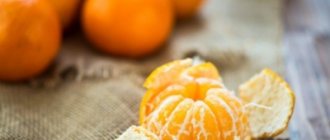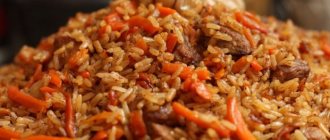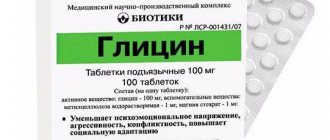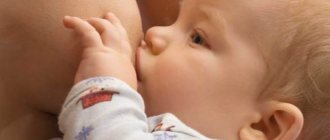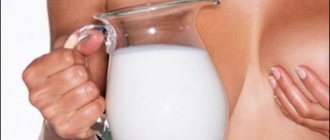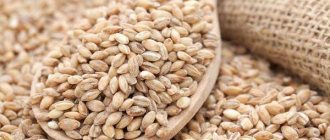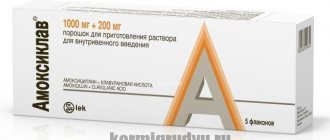Peanut or groundnut is a low plant of the Legume family. Peanuts are beans containing 2 to 4 nuts. Gradually they bend towards the ground, burrow into it and ripen. In terms of their composition, peanuts are very close to other nuts; they also contain a lot of proteins, fats, various vitamins, macro- and microelements. When eating these fruits, the body of a nursing mother can extract many useful substances from them. But you need to know that this product can also cause a negative reaction in the baby, so a woman needs to follow certain rules when introducing peanuts into her diet.
Composition of peanuts and their beneficial properties
The period of pregnancy and breastfeeding requires additional resources from the mother. A woman is advised to eat a varied and healthy diet to stay healthy and ensure the growth and development of her child. Food consumed must have a positive effect on the body and have biological value. The composition of peanuts directly determines its properties, and these, in turn, affect the nursing mother and the milk she produces.
Peanuts contain many useful substances, vitamins, macro- and microelements
Table: nutritional value of peanuts
| COMPOSITION AND CALORITY OF THE PRODUCT | SUBSTANCE CONTENTS PER 100 G | % OF DAILY VALUE FOR NURSING MOTHER |
| Squirrels | 26 g | 19% |
| Fats | 45 g | 49% |
| Carbohydrates | 10 g | 3% |
| Alimentary fiber | 8 g | 41% |
| Water | 8 g | 0.3% |
| Calories | 560 kcal | 21% |
Table: main vitamins and minerals in peanuts and their benefits for baby and mother
| NUTRIENTS | CONTENT PER 100 G | % OF DAILY VALUE FOR NURSING MOTHER | BENEFITS FOR MOTHER AND CHILD |
| Vitamin B1 (thiamine) | 0.7 mg | 41% |
|
| Vitamin B2 (riboflavin) | 0.1 mg | 5% |
|
| Vitamin B4 (choline) | 52.5 mg | 11% |
|
| Vitamin B5 (pantothenic acid) | 1.77 mg | 25% |
|
| Vitamin B6 (pyridoxine) | 0.35 mg | 14% |
|
| Vitamin B9 (folic acid) | 240 mcg | 48% |
|
| Vitamin C (ascorbic acid) | 5.3 mg | 4% |
|
| Vitamin E (alpha tocopherol) | 10 mg | 53% |
|
| Vitamin PP (nicotinic acid) | 19 mg | 82% |
|
| Potassium, K | 660 mg | 26% |
|
| Calcium, Ca | 76 mg | 5% |
|
| Magnesium, Mg | 180 mg | 40% |
|
| Phosphorus, Ph | 350 mg | 35% |
|
| Iron, Fe | 5 mg | 28% |
|
| Manganese, Mn | 1.93 mg | 70% |
|
| Copper, Cu | 1144 mcg | 82% |
|
| Selenium, Se | 7.2 mcg | 11% |
|
| Zinc, Zn | 3.3 mg | 22% |
|

Eating peanuts has a beneficial effect on a nursing woman and helps enrich her breast milk with beneficial substances.
Beneficial properties of peanuts
Peanuts should be consumed during breastfeeding because of the beneficial properties of its fruits:
- due to the content of vegetable protein, a woman’s milk becomes more nutritious;
- the functioning of the digestive organs is normalized due to the fiber contained in nuts;
- there is a positive effect on the functioning of the nervous system, stress is prevented and brain activity is activated;
- helps to increase hemoglobin levels, which benefits the body of the nursing mother and baby;
- the nut can lower blood glucose levels;
- the benefits of peanuts for women are manifested in improved skin condition, it becomes elastic and preserves youth for a long time;

- Peanuts help with increased stress on the body, because they contain potassium and magnesium;
- the nut naturally removes free radicals from the body;
- peanuts restore the elasticity of blood vessels, so they are used as a prophylactic for varicose veins;
- the nut helps increase the amount of breast milk;
- peanuts are an excellent antioxidant;
- The nut can increase the body's resistance to colds and helps strengthen the immune system.
Can nursing mothers eat peanuts? Yes, after all, a handful of these high-calorie nuts per day can provide a woman’s body with energy for the whole day during lactation.
Valuable qualities of peanuts during breastfeeding
- Peanuts contain protein, which contains essential amino acids. Such amino acids cannot be synthesized in the human body, so they must be supplied with food.
- Groundnuts are rich in dietary fiber (fiber). They have a beneficial effect on the digestion process, support beneficial microflora in the intestines, and prevent constipation and other diseases of the gastrointestinal tract.
- Peanuts contain a lot of antioxidants - substances that help prevent free radical oxidation processes. Antioxidants, including vitamin E and phospholipids, prevent the development of pathologies of the cardiovascular system and cancer. At the same time, they help prolong human life.
- Nuts contain phytosterol. It has the property of reducing the amount of cholesterol in the body by simply preventing it from being absorbed in the intestines. It is also believed to prevent cancer.
- Omega-9 and omega-6 fatty acids present in peanuts in small quantities are beneficial for mother and child . They are part of cell membranes, participate in the construction of neuron myelin, help synthesize hormones, have anti-inflammatory properties, maintain normal blood glucose levels, reducing the risk of developing diabetes. Omega-9 and omega-6 prevent the formation of cholesterol deposits in blood vessels and are necessary for the prevention of cardiovascular diseases. Fatty acids have a beneficial effect on the condition of the skin and mucous membranes, help fight stress, have a positive effect on the immune system, and prevent cancer cells from developing in the body. But the consumption of polyunsaturated fatty acids should be limited, otherwise they, on the contrary, can be harmful to the body.
- The various vitamins and minerals in nuts will, of course, have a beneficial effect on the mother and make her milk healthier for the baby. Considering the recommended portion of consumption of this product (up to 50 g per day), a nursing woman will receive from it more than a third of the daily requirement for nicotinic acid, copper and manganese, about a quarter of the daily requirement of vitamin E and folic acid, quite a lot of vitamin B1, magnesium, vitamin B5, phosphorus, iron, potassium and zinc.
Video: popular doctors about the benefits and harms of peanuts
Potential harm of peanuts for baby and mother
Peanuts are an obligate (true) allergen. This means that it is one of the foods that most often causes an allergic reaction, especially in children under 3 years of age. A large amount of protein in groundnuts can serve as a provoking factor for the baby’s immature digestive system . It is possible that the baby simply does not yet have the necessary enzymes to digest certain substances that come with food.
And sometimes allergies are genetically determined and characterized by individual intolerance to any component of the product. For example, if one of your closest relatives had a pathological reaction to peanuts, then the likelihood of the same immune response in the child himself increases significantly.
Moreover, after a nursing mother eats nuts, the baby becomes capricious, he develops redness of the skin, rash and diaper rash. The lips, eyelids and nasal passages may become swollen. Sometimes, due to peanut intolerance, intestinal colic occurs and the stool becomes looser. Having noticed such symptoms in a baby, a woman needs to exclude groundnuts from her menu and seek advice from a pediatrician.
If you are allergic to peanuts, a nursing mother should also not eat crayfish, crabs and shrimp, as they can also provoke a similar response in the child.

Peanuts are considered a very allergenic product, so you need to be very careful when introducing them into your diet while breastfeeding.
Fresh peanuts contain substances that interfere with their complete digestion in the gastrointestinal tract. In order for the product to be better absorbed by the body, it is recommended to subject it to heat treatment .
Since groundnuts contain quite a large amount of omega-9 and omega-6 fatty acids, it is recommended that mothers follow their consumption limits. As mentioned above, in acceptable doses, these polyunsaturated fats are beneficial for mother and baby, but their excess can cause various pathologies. With excessive consumption of nuts, disturbances in the functioning of the pancreas, liver and cardiovascular system are possible, and reproductive function sometimes suffers. And of course, the high calorie content of the product often contributes to excess weight gain.
It is advisable for a nursing mother to completely exclude peanuts in the form of various snacks from her diet. Such snacks can cause an allergic reaction in a child due to various flavoring additives and other substances introduced by the manufacturer. Salty, sweet or fried options are not healthy for either the woman or her baby.
Unshelled fresh peanuts should not be consumed! The dark skin protects it from insects, and if it enters the human body it can cause mild poisoning (diarrhea).
Secrets of use while breastfeeding
Is it possible to breastfeed peanuts? This is a purely individual question. In any case, you should not eat more than 10 beans a day. But if anyone in the family (including the child’s father) has suffered or is suffering from an allergy to this product, or if the child has any food sensitivity, you should avoid peanuts.
So, with due diligence, everything will be fine, but you need to be very careful when choosing a product.
- Where to buy. Better in large retail chains, hermetically packaged.
- Appearance. Clean, dry nut, without bitter odor, chips, or white coating. If the bean is in a shell, it should not “rattle” inside (this is a sign of overdrying).
- Storage. In the refrigerator, and if you have a large supply, then in the freezer to avoid mold.
Nutritionists advise: it is best to eat peanuts during lactation not separately, but as an ingredient in various dishes - for example, several crushed kernels in a salad. It is much better absorbed “in the company” of fiber and vitamins, which you get from herbs, fruits, and vegetables (“it is not friendly” only with tomatoes).
To sum up the question of whether a nursing mother can eat peanuts, we will answer: it is possible, but with extreme caution and in limited quantities, taking into account the individual characteristics of yourself and the baby.
How and when can you introduce peanuts into the diet of a nursing mother?
Peanuts contain many useful substances, but due to the high allergenicity of the product, mothers should not introduce them into their diet in the first month of the child’s life. It is recommended to include groundnuts in the menu from the third or fourth month after birth if the baby’s relatives do not have allergies. Otherwise, it is better not to eat peanuts for the first year.

It is recommended that a nursing woman introduce peanuts into her diet no earlier than the third month of her baby’s life.
Rules for introducing peanuts:
- For a month before trying nuts, the child must be absolutely healthy and without signs of allergies.
- Peanuts cannot be introduced into the menu together with another new product at the same time.
- The first portion is necessarily small (2–3 nuts) .
- Within 3 days it is necessary to observe the baby’s reaction to the innovation.
- If the child has no allergic manifestations to peanuts, the portion is gradually increased to 30–50 g per day.
Before use, it is recommended to dry fresh peanuts in the oven or fry them in a dry frying pan. After this, you need to remove the skin from it.
Peanut butter during breastfeeding
The vitamin and mineral composition of peanut butter, as well as its properties and effects on the body, are very similar to peanuts. But you need to keep in mind that this product may contain various additives. Which ones exactly depend on the manufacturer. Therefore, when choosing a paste, a nursing mother needs to carefully study its composition indicated on the label. It usually contains more fat and carbohydrates than the nuts themselves, due to the addition of vegetable oils and sweet syrups . As a result, the calorie content of the paste increases to 600 kcal.
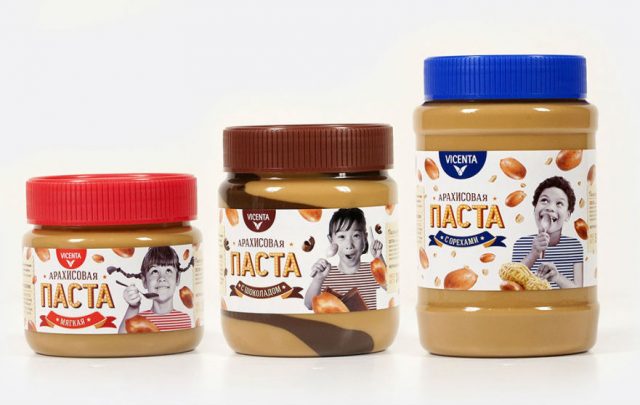
Peanut butter, in addition to the ground nuts themselves, may contain various additives, so a nursing mother needs to pay attention to its composition
A woman needs to remember that substances introduced into the paste can cause an allergic reaction, regardless of the baby’s perception of peanuts as such. Therefore, you need to introduce peanut butter into your diet gradually, like a new product. If the child reacted positively to it, it is not recommended to change the manufacturer in the future.
The daily serving of peanut butter should not exceed 30 g. It can be spread on whole grain bread or eaten with fruit.
How to properly introduce it into the diet of a nursing mother and can this be done in the first month?
Pediatricians have ambivalent answers to the question of whether peanuts can be consumed while breastfeeding.
In the first month after birth, peanuts should not be introduced into food if the woman did not eat them during pregnancy. The baby’s body, not accustomed to the new product, will malfunction in the form of indigestion and allergies. Worrying pain will lead to disruption of normal sleep and loss of appetite.
3 months after the birth of the child, groundnuts are introduced into the diet carefully. Mom eats two nuts, carefully watching the baby. If you feel normal, continue taking peanuts for 24 hours.
You should consume 30–40 grams of it twice a week, preferably adding it to salads or other dishes.
